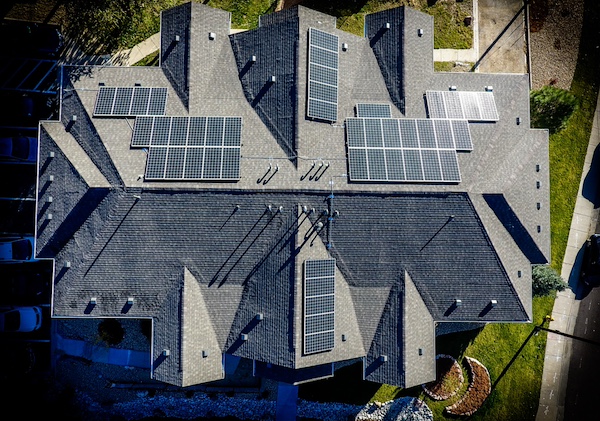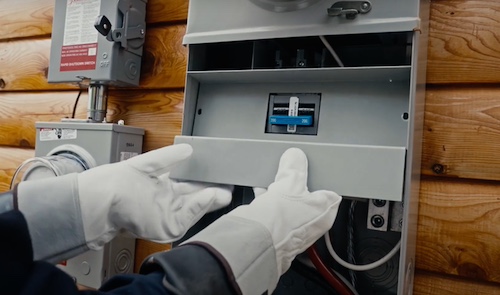Affordable Solar for Everyone
Heat waves encircled much of the earth last year, pushing temperatures to their highest in recorded history. The water around Florida was “hot-tub hot” — topping 101° and bleaching and killing coral in waters around the peninsula. Phoenix had seen a ferocious 110 degrees or more for 27 days. In Palermo, Sicily, which has kept temperature records since 1791, the thermometer hit 117 degrees on July 24, shattering its previous high. Wildfires in Greece spurred massive, frantic evacuations. And a small town in northwest China recorded the hottest temperature in that country's history. Climate scientists from the World Weather Attribution initiative released the results of a study that determined, among other things, that “Without human induced climate change, these heat events would have been extremely rare…while maximum heat like in July 2023 would have been virtually impossible to occur in the US/Mexico region and Southern Europe if humans had not warmed the planet by burning fossil fuels.”

The stark reality is that climate change is here, at least a decade earlier than many experts had feared and predicted. That’s even as the US and other countries spend hundreds of billions to “electrify” our societies, replacing the way we currently use fossil fuels to generate electricity and power our homes, businesses, industry, and transportation with energy from renewable sources. It’s a stance advocated and advanced by Rewiring America, an organization dedicated to electrification, that asserts that US consumers must install millions more heat pumps, heat pump water heaters, induction stoves, electric vehicles, and rooftop solar systems that Americans to meet U.S. climate commitments. But that’s a big challenge in a world that has been addicted to coal, gas, and petroleum for well over a century. To make it happen, we need more ways and places to charge vehicles, more distributed energy sources such as home solar, and more efficient appliances, thermostats, and HVAC systems. Fortunately, technology companies are stepping up to identify and solve these needs.
A good place to start is at home, and more Americans are embracing and installing rooftop solar systems. When the sun shines and the panels are generating electricity, their electric meter is spinning—in reverse. When the sun goes down, many homes still have non-grid electricity, because their systems are paired with battery storage. Others are buying hybrids or all-electric vehicles, with home chargers that run at night when electricity is typically cheapest. One circumstance driving the adoption of residential distributed energy resources (DER) is a wider recognition by the American public that climate change is already upon us, the need for more reliable electricity, and the desire to help save our planet.
In fact, according to the Solar Energy Industries Association (SEIA), the residential segment installed just shy of 6,000 MW (DC) in 2022, growing by a “staggering” 40 percent over 2021, amounting to more than 700,000 homeowners. And energy analysts released a study in June 2023 which indicates that “the US DER market will nearly double between 2022 and 2027, to reach almost US $68 billion per year. Behind-the-meter capacity will grow 3.7 times more over this period than it did in the previous five years. EV charging infrastructure is responsible for the lion’s share of that growth, but distributed storage will see seven times the growth in the next five years that it did in the last five.”

These systems are not inexpensive. Interconnecting rooftop solar installations, integrated battery storage systems, smart appliances, and home EV chargers can require costly circuit-breaker panel upgrades and rewiring, especially in older homes.
The average age of an American home is about 40 years, with homes in the Northeast averaging over 60 years. Most of those homes were built when the demand for electric service rarely exceeded 100 Amps. Costly service panel upgrades (as much as $5,000) may be needed to support the additional energy demand of DERs. That’s a $100 billion impediment to residential electrification and the energy transition — a problem that can put these energy-saving and climate-friendly opportunities beyond the reach of low- and middle-income populations, even if they own their homes.
Fortunately, several solutions are available today. A notable one is an adapter for residential electric meters that requires no re-wiring, and supports an easy, “plug and play” connection to a rooftop solar system. This means a process that takes less than 10 minutes rather than hours, works with any home meter, and promotes a low-cost, safe, and hassle-free integration of distributed energy resources.
Home-based distributed energy resources are changing the entire grid-based power generation and delivery model. Tools such as meter adapters can make that easy, safe, and inexpensive.
 Jason Subirana is Chief Operating Officer at ConnectDER. For over a decade, ConnectDER has worked with utilities, solar installers, and electricians to develop meter socket adapters that connect homes across the nation to clean energy resources in a safe, affordable, and streamlined way.
Jason Subirana is Chief Operating Officer at ConnectDER. For over a decade, ConnectDER has worked with utilities, solar installers, and electricians to develop meter socket adapters that connect homes across the nation to clean energy resources in a safe, affordable, and streamlined way.
ConnectDER | connectder.com
Author: Jason Subiranao
Volume: 2024 March/April










.png?r=5562)

